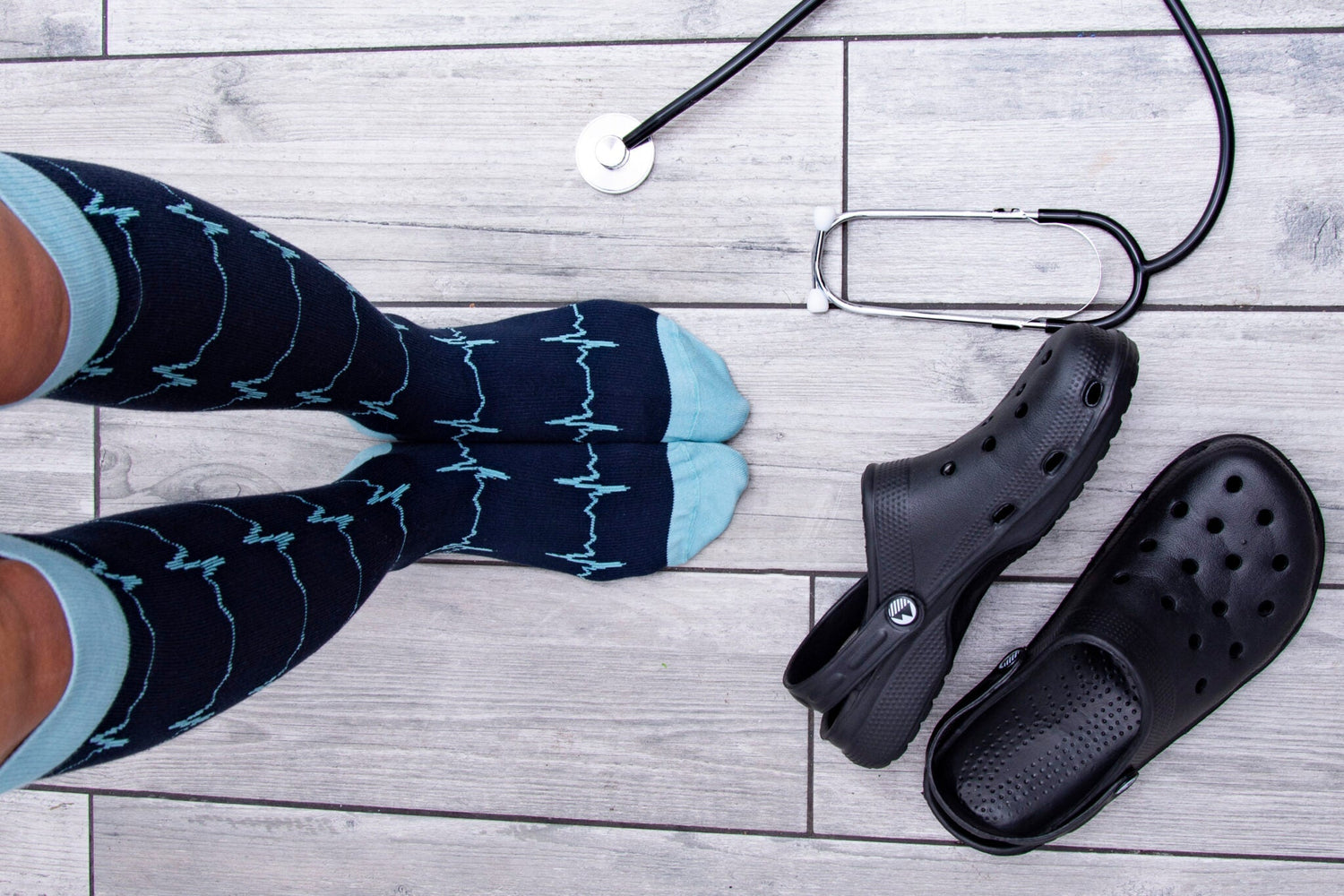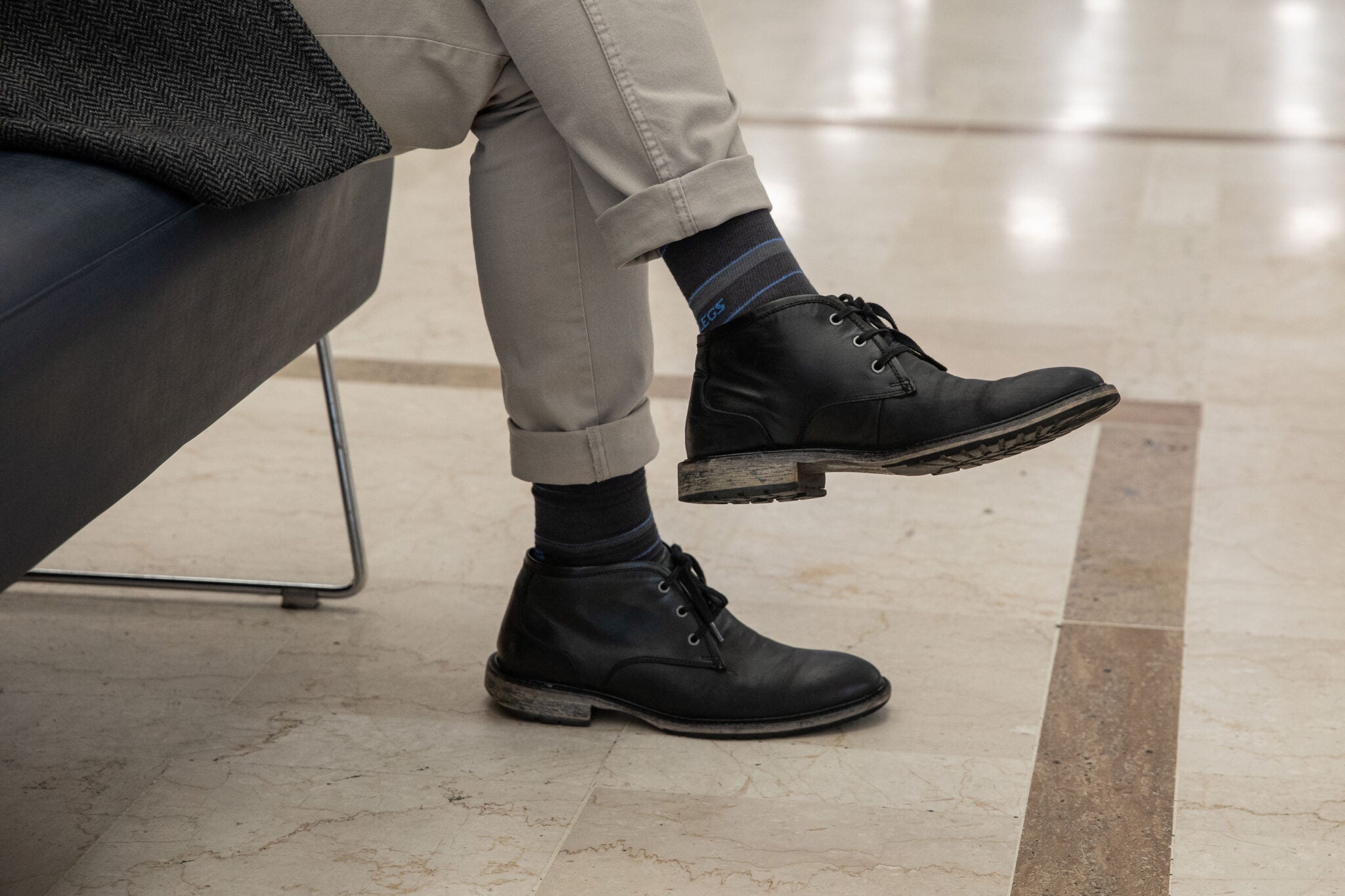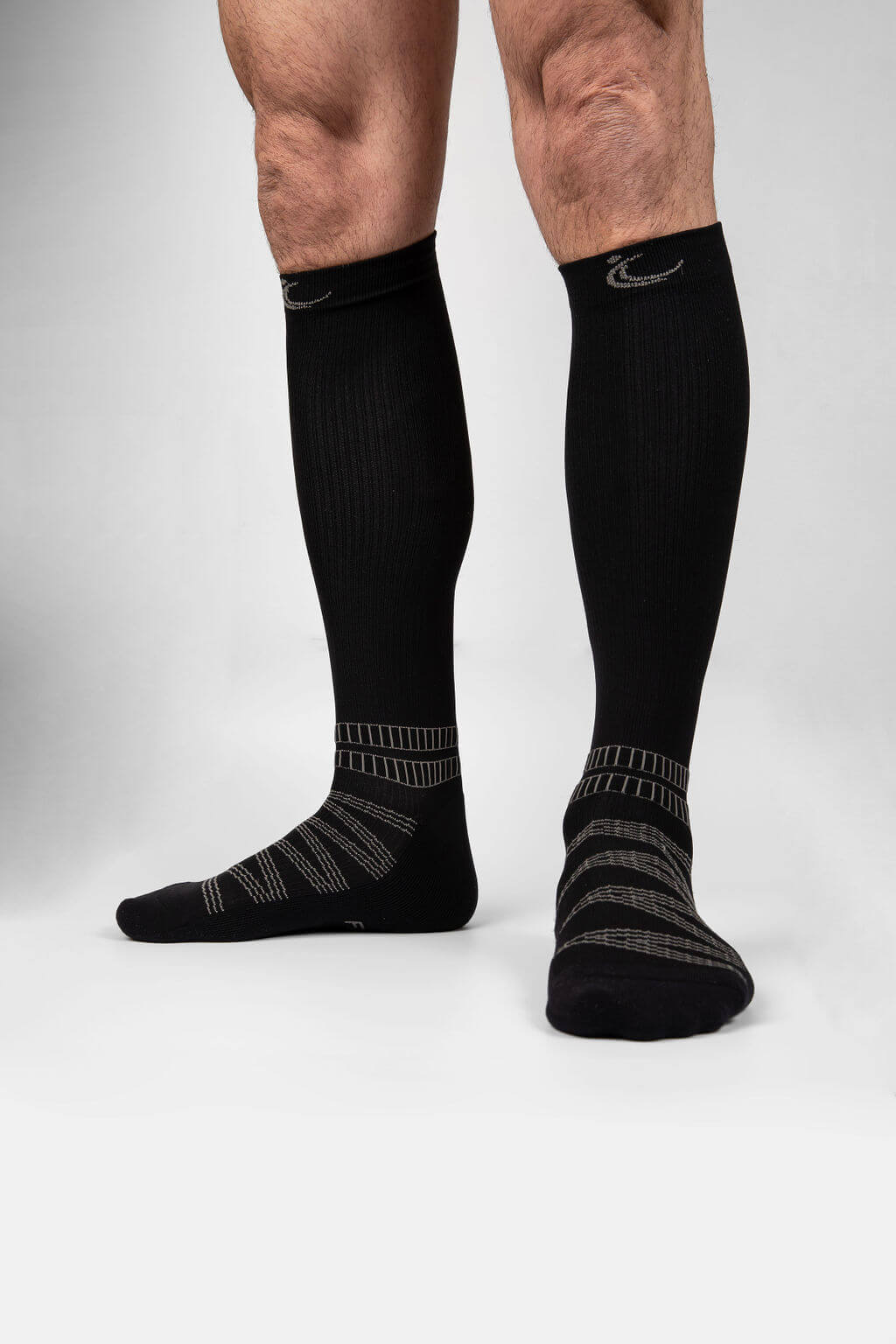Why do Nurses Wear Compression Socks?
Nurses are constantly on their feet, tirelessly rushing from one patient to another. In recent years, you may have noticed a stylish addition to their uniform – compression socks for nurses. Beyond their stylish appearance, these socks serve a vital purpose in a nurse’s daily routine.
Why Are Nurses Wearing Compression Socks?
- Alleviating Leg Fatigue: Long shifts on hard hospital floors can lead to tired, achy legs. Compression socks provide relief by promoting better blood flow.
- Preventing Varicose Veins: Nurses are at risk of developing varicose veins due to prolonged standing. Compression socks help maintain vein integrity.
- Reducing Swelling: Long hours on their feet can cause fluid to accumulate in the lower extremities. Compression socks combat this swelling.
- Lowering DVT Risk: Nurses often work extended shifts, which can increase the risk of Deep Vein Thrombosis (DVT). Compression socks help mitigate this risk.
What are the Benefits of Compression Socks for Nurses?
- Improved Circulation: Compression socks gently squeeze the legs, aiding blood flow from the feet back to the heart. This prevents blood from pooling and decreases the risk of clot formation.
- Varicose Vein Prevention: Compression socks help maintain the integrity of veins, reducing the likelihood of developing varicose veins, a common issue among nurses.
- Swelling Management: Nurses often may experience edema or swelling in the lower legs. Compression socks combat this by encouraging fluid to move out of the legs and back into circulation.
- DVT Risk Reduction: Long hours of standing or sitting increase the risk of DVT. Compression socks provide a simple yet effective preventive measure.
- Enhanced Comfort: Many compression socks are designed with stretchable fabric such as soft cotton, offering additional comfort during those extended shifts.



